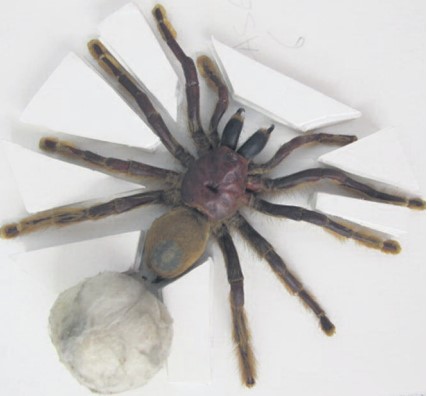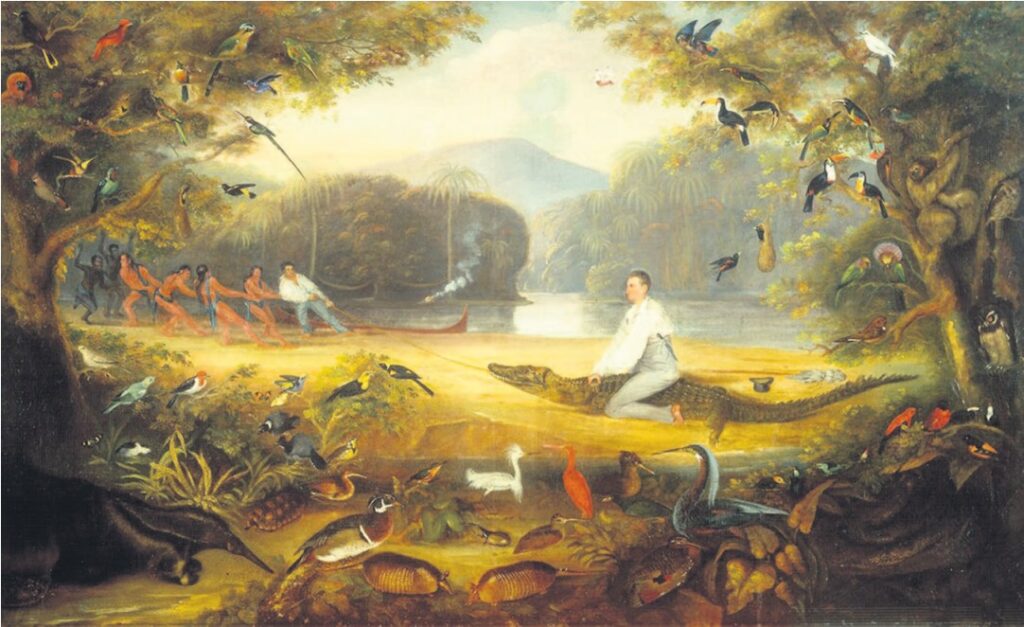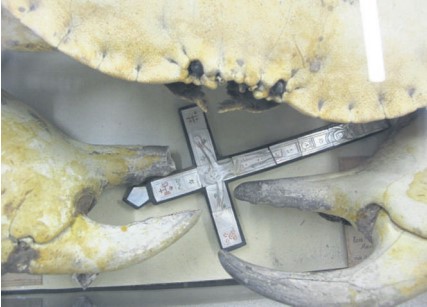Friday 2nd June 2017
A life of exploration led Waterton to discover the need to preserve nature
Stonyhurst College is renowned for its impressive collections of art, medieval manuscripts, Catholic artefacts, vestments and relics, displayed throughout the school and in its three libraries, home to some 60,000 books including a First Folio of Shakespeare.
What is less well know is that the College also houses many nationally and internationally significant Natural History collections, which reflect important 19th century developments in science and medicine.
Charles Waterton was a pupil at Stonyhurst College in the late 1790s. He came from a landed gentry family descended from numerous saints, including Vladimir the Great, Saint Anna of Russia, Saint Stephen of Hungary, Saint Margaret of Scotland and Saint Thomas More.
The family remained staunchly Catholic after the Reformation and as a result forfeited much of their land and wealth, leaving them only Walton Hall near Wakefield. While at Stonyhurst, the young Waterton’s interest in exploration and wildlife was already evident and the Jesuit teachers encouraged him to explore while attending to his studies at the same time.
They came to an unusual compromise with the 11-year-old boy, as he noted in his autobiography: ‘By a mutual understanding, I was considered rat-catcher to the establishment, and also fox-taker, foumart-killer, and cross-bow charger at the time when the young rooks were fledged. I followed up my calling with great success. The vermin disappeared by the dozen; the books were moderately well-thumbed and according to my notion of things, all went on perfectly right.’
In 1804 he travelled to Guyana to take charge of his uncle’s estates near Georgetown. In 1812 he started to explore the interior of the country, and reached Brazil having walked barefoot in the rainy season. He described his natural history discoveries in his book Waterton’s Wanderings in South America, published in 1821.
Waterton was a skilled taxidermist and preserved many of the animals he encountered on his expeditions for study by scientists and naturalists back in Britain. He employed a unique method of taxidermy, soaking the specimens in what he called ‘sublimate of mercury’, a highly toxic chemical.
Unlike many traditionally stuffed animals, his specimens are hollow and lifelike. Some specimens displayed his anarchic sense of humour, as he created animals which resembled those with whom he disagreed, such as the Hanoverian monarchy, Martin Luther and an unnamed English Customs official who charged him excessive duty to bring his specimens into the country.
Other creations reflect his affection for his Jesuit teachers, including a large crab holding a crucifix, beside which is a poem written by Waterton telling the story of the crab that returned St Francis Xavier’s crucifix when he dropped it in the sea in Goa.
Many hundreds of these remarkable animals are preserved to this day at Stonyhurst College, along with a remarkable painting showing Waterton riding on a cayman
Charles Waterton is credited with bringing the anaesthetic agent curare to Europe. In London, with Fellows of the Royal Society, he immobilised several animals, including a cat and a mule, with the substance which he called wourali, after the Guyanan name for the poison where it was used to hunt animals for food. The mule was renamed Wouralia and lived for years at Walton Hall as a local celebrity. This was the first recorded use of a muscle relaxant in a medical context, and was the basis for modern anaesthesia.
Waterton was keen to learn about all manner of poisons, collecting snakes and tarantulas, and used his own body in experiments to discover their effects. He longed to be bitten by a vampire bat, and slept in the rainforest with his feet sticking out of his hammock in the vain hope that the creatures would find them irresistible. He was a passionate conserver of nature, and spent the equivalent of £1million building a nine-foot-high wall around three miles of his estate at Walton Hall, turning it into the world’s first wildfowl and nature reserve.
David Attenborough has described him as a champion of nature conservation and “one of the first people anywhere to recognise, not only that the natural world was of great importance, but that it needed protection as humanity made more and more demands on it”. Waterton was a vehement opponent of slavery, finding the practice inhuman and utterly repellent to his strong Catholic faith. By an extraordinary coincidence one of the slaves with whom Waterton worked in Guyana was to have a significant influence on one of the greatest scientific thinkers of the 19th century

John Edmonstone was a black slave, the property of Charles Edmonstone, an expatriate Scot who owned plantations in Guyana. He learned taxidermy from Charles Waterton, who had married Anne, Charles Edmonstone’s daughter.
John accompanied Waterton on his expeditions into the rainforest to collect animals, learning how to preserve the skins to prevent their decomposition. In 1807 John Edmonstone was freed, and came to Scotland with his former master. He moved to Edinburgh where he taught taxidermy to students at Edinburgh University.
Charles Darwin came to Edinburgh in 1825 to study medicine, but found himself unsuited for the study of human anatomy and surgery. During his first winter at Edinburgh, Darwin hired Edmonstone to teach him taxidermy for one guinea a week. Edmonstone gave Charles Darwin inspiring accounts of tropical rain forests in South America and may have encouraged Darwin to explore there. Certainly the taxidermy Darwin learned from Edmonstone helped him greatly during the voyage of the SS Beagle, and arguably he might have never embarked on the historic journey without Edmonstone’s mentorship
He spent his childhood in Brussels, where his father was Austrian envoy to Belgium, and moved to England in 1867. As a Catholic, von Hügel was ineligible for entry to Cambridge and Oxford and was educated through Stonyhurst College’s undergraduate programme, where he read Philosophy.
Suffering from bad health, he was advised to travel to a warmer climate and embarked on a trip to the South Pacific in 1874. He collected and recorded whatever information and objects he could find. Entranced by the beauty of Fiji, he learned the language, although his passion for collecting led him into difficulties and he was more than once rescued by the governor who described him as ‘half starved, having spent all his money, and having even cut the buttons off his clothes in exchange for native ornaments’. Back in England, in 1883 von Hügel was appointed curator of the new Museum of General and Local Archaeology in Cambridge, which is now the Cambridge University Museum of Archaeology and Anthropology.
He was a surprising choice. Although his scholarship was well known by this time, he was a foreigner and Catholic. Throughout his life he devoted himself to Catholic causes and when Catholics were once more eligible for entry to Cambridge and Oxford in 1895, he immediately founded, together with Henry Fitzalan-Howard, 15th Duke of Norfolk, a hall of residence in Cambridge.
Established in 1896, St Edmund’s College soon became the preferred college for Catholic students and scholars in Cambridge and now also houses a research institute named after von Hügel. Founded in 1987, the Von Hügel Institute is a Roman Catholic research institute dedicated to the study of the relationship of Christianity


